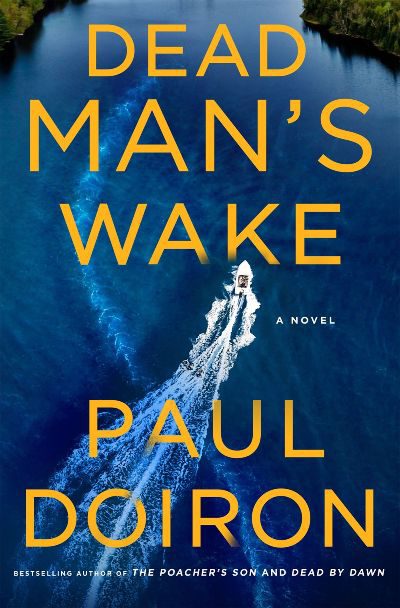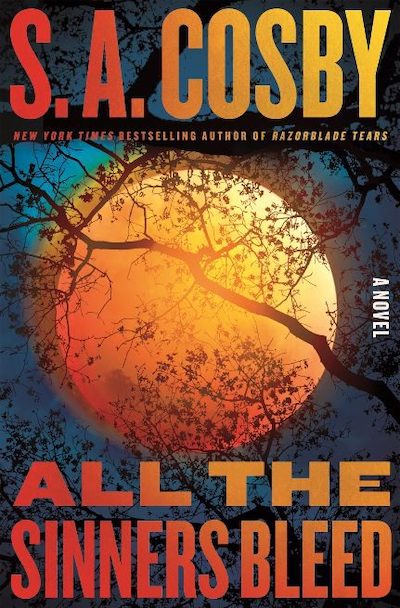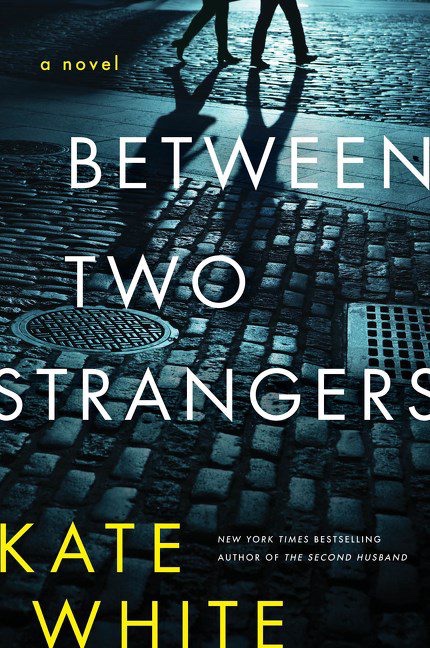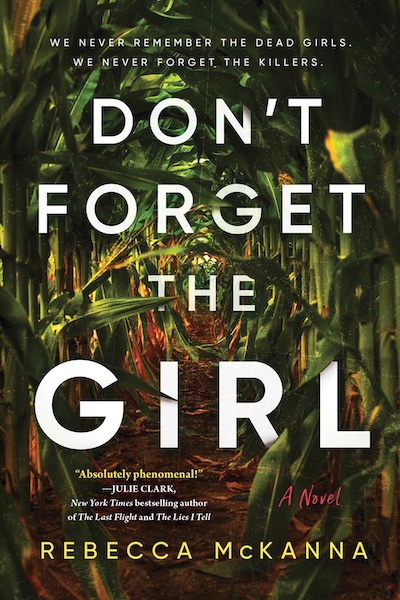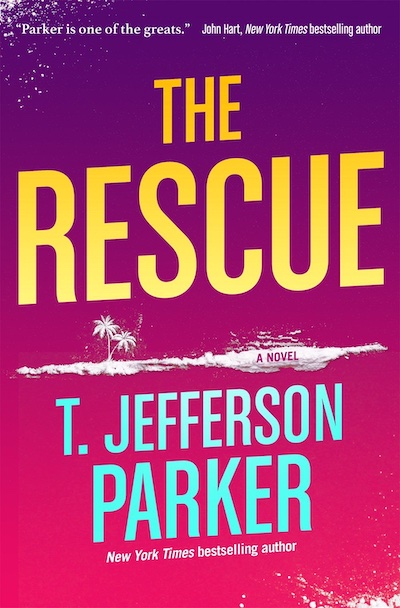It’s the rare writer who can create an intense, well-paced thriller while taking on one of the greatest social issues of our time. And Kia Abdullah is one of those few writers. Salma Khatun, her husband Bil, and their teenage son, Zain, have just arrived at a new development in the London suburb of Blenheim. They’ve left behind the far more diverse and comfortable community of Seven Kings for fear that Zain may be getting in with the wrong crowd. Will it be a fresh start or a crash landing? Here’s the first clue: the next-door neighbor rips Zain’s Black Lives Matter poster out of the front garden, and when Salma puts it in the window, they paint over the window! Things escalate from there, but in a manner that is free of cliché and grows from the characters, who represent a range of opinions and emotions. In a nice aside, Zain and the boy next door, both budding programmers, manage to strike up a friendship that leads to the development of a software for use by those with hearing impairments. But the story doesn’t end there, and where it does lead us is shocking, tragic, and damning. One of the best books I’ve read this year; I can’t wait to discuss this with a book group
Thrillers
This unexpected and brilliant work examines the work of life: self love, self forgiveness, and the need to have others see us as we really are. Cambridge, MA psychologist Dr. Gregory Weber’s life is chugging along, grumpy teenager daughter notwithstanding, despite Gregory living every day with a horrible mistake he made when he was 17, something he’s told nobody about and that stops every relationship from being whole. All is turned upside down when a patient who claims he asked her to start therapy shows up, a woman he could swear he never encountered before. In no time, he’s deeply in love this intriguing woman and desperate to see every Wednesday at 1:00, even though from the beginning she takes his seat at each session and insists that he’s in the patient role. What happens over time, with old and new secrets increasingly working their way toward the surface, threatens to destroy Gregory’s life as he knows it. The ending here, which includes a startling twist, is both satisfying and teaches readers profound lessons about the nature of what we owe others and ourselves. A must read.
Both fans and newcomers to the series can sink deep into the pages of Doiron’s latest Mike Bowditch adventure, which sees the Maine game warden’s family vacation upended by what at first appears to be a boating accident. A man’s arm is found floating in the lake, clearly torn off by a boat propeller. Finding the related body opens a new scenario that Mike, local police, and the local forensic examiner puzzle to solve while also navigating the behavior of the rich. They live on the lake where the arm was found and aren’t keen on having their vacations interrupted. Law-enforcement politics are also to be maneuvered around, a tricky task when the lake constable wanted a game warden’s job but was considered too erratic. At the center of the maelstrom is the calm circle of Mike’s family, whose love and stability provide a stark contrast to the nail biting scenes facing the warden. Wilderness thrillers provide a great break from the real world—get this one on your list.
What’s the scariest place in crime fiction these days? Yes, that would be the suburbs. Alexis and Sam, her husband, buy a run-down house in a super-posh neighborhood in the DC suburbs. They love what the home could become, but for now it just feels like a bottomless money pit. Alexis is pregnant with the couple’s second child, and with little help from Sam—he’s trying for partnership at his law firm—motherhood is no picnic. To say the two grate on each other is an understatement. It doesn’t help that most people in the neighborhood assume that brown-skinned Alexis (she’s part Honduran) is one of the help. But the women in the neighborhood, chardonnay in hand, do try to make her feel welcome, while pumping her for gossip. When their neighbor Teddy is found dead by the nearby Potomac River—he was out for a run—everything takes on a sinister patina. In the ensuing weeks, Alexis grows close to Blair, Teddy’s widow, offering support while Blair fills her in on the lives of their neighbors. They’re a creepy crew if there ever was one, forever loitering in each other’s backyards, peeking into windows. Could Teddy’s death be linked to one of them? In the armful of suburban domestic thrillers publishing this summer, this debut—with its wild, super-spin of a plot, in which everything is turned upside down—is one not to miss.
A school shooting in fictional Charon County, VA, reveals horror and catalyzes reckoning in S.A. Cosby’s eagerly awaited follow-up to Razorblade Tears. This is, unsurprisingly, a masterpiece of Southern noir, but that’s selling it short: it’s a fantastic novel, period. The first responders to the shooting are led by Sherriff Titus Crown, a Black man who won a contentious, racist battle for his seat and who now safeguards Klan members and kind neighbors alike. Titus is able for them all, alternating deep kindness with cutting, politically savvy one-liners that put racists in their place. (Appropriate, given his lack of fondness for “stand[ing] there like an extra in Gone with the Wind.”) But even he is thrown when the investigation into the school shooter—a Black man killed at the scene by white cops—uncovers a grisly secret. Join Titus and his meticulously drawn, flawed family, colleagues, and townsfolk for a deep introspection on how evil begets evil and good begets good. And watch for the gripping movie that’s sure to spring from Cosby’s pages.
Kate White’s suspense novels always provide me with the perfect imaginary getaway—and Between Two Strangers does not disappoint. Struggling artist Skyler Moore gets summoned to a posh Scarsdale law firm on a matter of private business, only to discover that she’s to receive a large inheritance. We’re talking millions here (feel free to take ten minutes and imagine this happening to you). The catch? She has no idea who Christopher is, the guy who left her such a sum. Only after research and days of reflection does she realize he was a one-night stand from over a decade ago, when she was a grad student in Boston; she has had no contact with him since. It’s not surprising that Skyler suppressed memories of that evening as it was just a few days later that her younger sister, also a student in Boston, went missing. While being harassed by Christopher’s family, especially his wife, who’s convinced Christopher and Skyler were having an affair, Skyler has to keep it together for an important exhibit she has coming up…but can’t help being drawn back to that one fateful weekend. What was Christopher trying to tell her through the trust he left her?
First, there were three. Now only two women are left, estranged but still desperate to know what happened to their college friend Abby, who disappeared years ago. They might never know, as serial killer Jon Allan Blue, who killed other young women in the area around the same time, is about to be put to death. The two remaining friends can’t be more different. Bree is a college professor who’s having an affair with an underage student, which sets in relief the unending turmoil caused by Abby’s death. Chelsea is an Episcopal priest whose collar and steadfast demeanor hide an inner longing to break out of her marriage to a man who “looks like a photo of himself that [has] been left too long in the sun.” The two must interact again when a true-crime podcast covers Blue’s killings. The producer tries to convince Bree and Chelsea that their friend’s case deserves to be investigated, but with the show breathlessly feeding the media frenzy with comments like, “Friends don’t let friends get murdered” and Blue himself relishing the spotlight, participation seems counterproductive, not to mention tacky. While Abby’s fate is debated, we flash back to the three friend’s lives in the run up to her disappearance. This and the carefully posed exposé of podcast politics will leave readers looking differently at the spectacle that is the true-crime world, especially when it comes to women victims.
Parker, author of one of last year’s most memorable crime novels, A Thousand Steps, is back with something different, but with echoes of the best of that book. It opens with a gunfight between Tijuana, Mexico drug cartels that ends in human loss but, more importantly for this story, the shooting injury of a dog who’s rescued by a passing boy. Later, waiting for adoption in a shelter, the dog becomes the unexpected star of a viral video made by Bettina Blazak, a California journalist who can’t resist him; she names him Felix after the vet who saved the dog’s life and takes him home. Bettina quickly sees that this might not be the street mutt everyone thinks. He is used to being on a leash and understands commands in both Spanish and English. Enter the multiple characters who have seen the video and want Felix for themselves. The dog is a former drug and currency sniffer for the DEA, and lately his superior skills have been used by a drug gang to find and steal their rival gang’s wares, hence the opening shootout. They want him back, and another previous owner, the child who first discovered Felix’s superior ability to find anything by scent, has also seen the video and is sending Bettina heartbreaking emails. Who will win? It takes some violent scenes to find out, and along the way we’re treated to a look at the world of sniffer dogs—it’s fascinating!—and, even better, a look at love, loyalty, and resilience through canine eyes. Sounds odd? It is, but it’s also heartwarming with a side of fear and thrills.
An unnamed village in Cork, Ireland, is a social-media-fueled soap opera in Bose’s suspenseful debut. Ciara lives for her own camera, with her rich husband and three perfectly-dressed-at-all-times children supporting actors in an Instagram fiction. The mostly fawning comments from the neighbors include some from her Indian neighbor, Mishti, who left love in India for an arranged marriage to cold, miserly Parth. Her only joy is her daughter, Maya. Decidedly not fawning is neighbor Lauren, who inherited her home in the wealthy enclave that Ciara rules. Lauren doesn’t fit in and doesn’t care to. She carries a child in a sling almost constantly, while Ciara’s Instagram-approved parenting involves virtually no contact. Lauren’s house is dirty, her clothes are too, and her husband is the furthest man from Parth imaginable. The women’s sniping relationships with each other and their families build to a boiling point, one whose violent outcome is revealed near the beginning of the story in a scene that lingers mysteriously in the background as the drama festers. Mishti’s struggles are a highlight here, sad though they are, with Bose’s writing of a desperate character sadly reminiscent of Parini Shroff’s The Bandit Queen.
It’s Tuesday afternoon in suburban Stanhope, and all is as it should be. Family man Dr. William Wooler is at a local motel with one of the hospital volunteers. Except it turns out that today she’s decided to dump him. Furious, he heads home, only to discover his nine-year-old daughter, Avery, in the kitchen, having skipped out on choir practice. As “difficult” as she is mouthy, she’s sucking down Oreos and doing a good job of pressing her father’s buttons. But when Wooler strikes her with a blow to the head that knocks her to the floor, it’s still a shock, to both of them and the reader. Dad-of-the-year hightails it out of there—he goes for a drive to cool off—and when the Woolers’ son gets home from basketball practice, he finds the house empty. Where’s Avery? Thus begins this intense domestic suspense novel in which an entire community is taken apart and turned inside out. Families are interviewed, oftentimes iteratively, histories are resurrected, houses are searched, motives are examined, and what the cops don’t expose, the media does. All the pieces come together brilliantly in a shocking finale.



